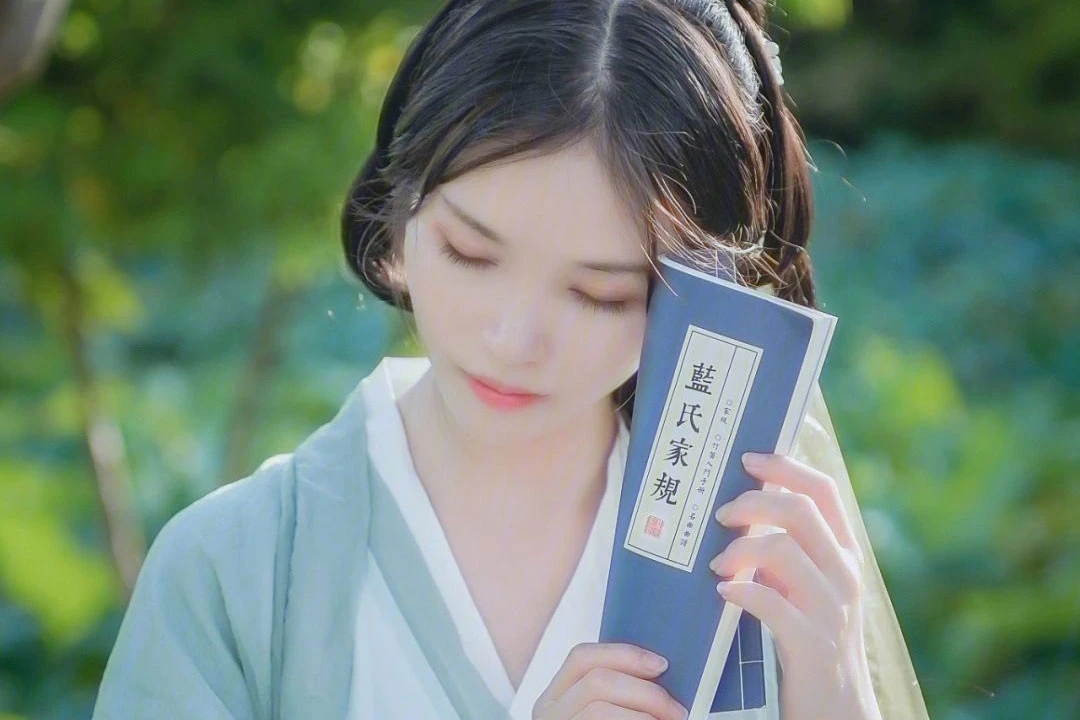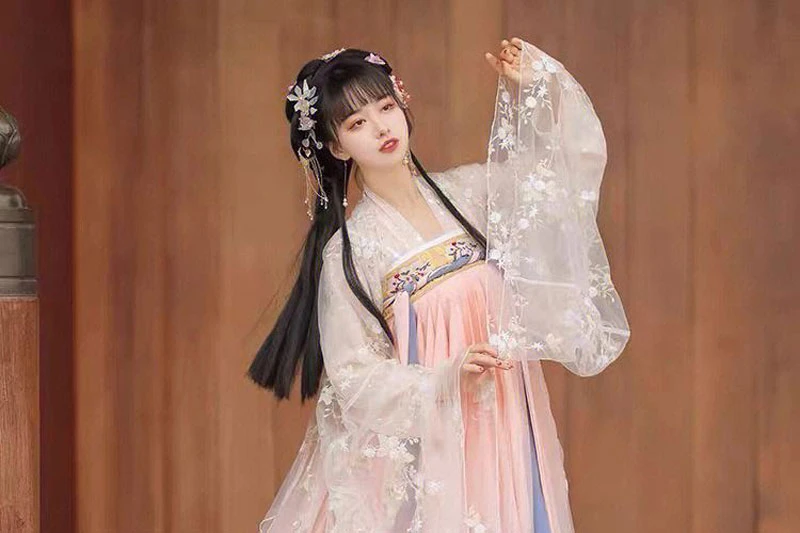Embarking on a journey through the pages of Chinese history and culture, we delve into the intricacies of a classic Hanfu ensemble: the Ruqun. As we unravel the layers of this timeless attire, we explore its components, cultural significance, and the nuances that set it apart in the broader landscape of Hanfu fashion. Join us on this immersive exploration into the captivating world of Ruqun, where every thread weaves a tale of tradition, elegance, and the enduring spirit of Chinese heritage.
1: Defining Ruqun in Chinese
Origins and Etymology
The term “Ruqun” (襦裙) is a composition of two Chinese characters. “Ru” refers to the upper garment, also known as “yijin,” while “qun” designates the lower skirt. The combination of these two elements creates a harmonious ensemble that embodies the grace and cultural richness of traditional Hanfu.
Historical Roots
Ruqun’s roots can be traced back to ancient China, where it became a prevalent style worn by women across various social classes during different dynasties. Its enduring popularity is a testament to its timeless design and cultural significance.
2: The Components of Ruqun
Ru (Upper Garment)
The “Ru” or upper garment is a fitted, cross-collared top that forms the upper half of the Ruqun ensemble. Its intricate design, often fastened with ties or fabric buttons, contributes to the overall elegance of the attire. This component is not merely a piece of clothing but a canvas for cultural symbolism and personal expression.
2.2 Qun (Lower Skirt)
The “Qun” or lower skirt completes the Ruqun, flowing gracefully from the waist to the ankles. It can be pleated or straight, offering wearers a choice in silhouette. The Qun is secured around the waist with ties or a sash, creating a harmonious blend of structure and fluidity.

3: Cultural Significance of Ruqun Hanfu
3.1 Historical and Symbolic Meaning
Ruqun embodies more than just a fashion statement; it carries historical and symbolic meanings deeply ingrained in Chinese culture. The crossed collars and flowing skirt evoke a sense of modesty, grace, and cultural values, reflecting the traditions of the past.
3.2 Versatility in Expression
The modular design of Ruqun allows for versatility in expression. Wearers can mix and match different tops and skirts, creating a myriad of combinations that showcase individual creativity while adhering to the elegance of traditional Hanfu.
4: The Difference Between Hanfu and Ruqun
4.1 Hanfu as a Broad Category
Hanfu serves as an umbrella term encompassing a diverse range of traditional Chinese clothing styles. It spans one-piece dresses (qixiong ruqun), layered robes (aoqun), and more, each representing unique historical periods and fashion trends.
4.2 Distinctive Features of Ruqun
Ruqun, while falling under the umbrella of Hanfu, distinguishes itself through its two-piece structure. This feature provides wearers with greater flexibility and ease of movement, setting it apart from other styles within the broader category.
5: Ruqun vs. Hanfu: Bridging Tradition and Diversity
5.1 Hanfu as a Cultural Heritage
Hanfu, as a cultural heritage, serves as a canvas for the preservation and celebration of Chinese traditions. It is a testament to the rich history and evolving aesthetics that have shaped the identity of the Chinese people.
5.2 Personalization and Tradition in Ruqun
The modular design of Ruqun allows wearers to infuse their personal style into this classic ensemble. The ability to mix and match different components provides a modern touch while maintaining the timeless elegance and cultural roots of traditional Hanfu.
In conclusion, the Ruqun stands as a symbol of enduring elegance, weaving together threads of tradition, cultural symbolism, and individual expression. Its two-piece structure, rich history, and versatility make it a cherished component within the vast tapestry of Hanfu fashion. As we traverse the realms of Chinese heritage, the Ruqun invites us to appreciate not only the outer layers but also the profound stories and traditions embedded within each carefully crafted garment. In the ever-evolving landscape of fashion, the Ruqun remains a timeless piece, bridging the past with the present and leaving an indelible mark on the cultural legacy of China.

